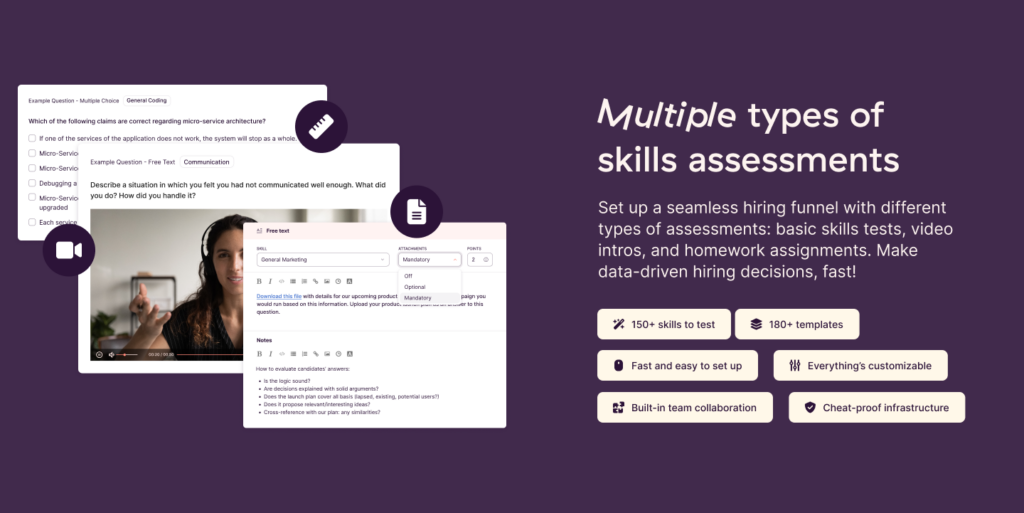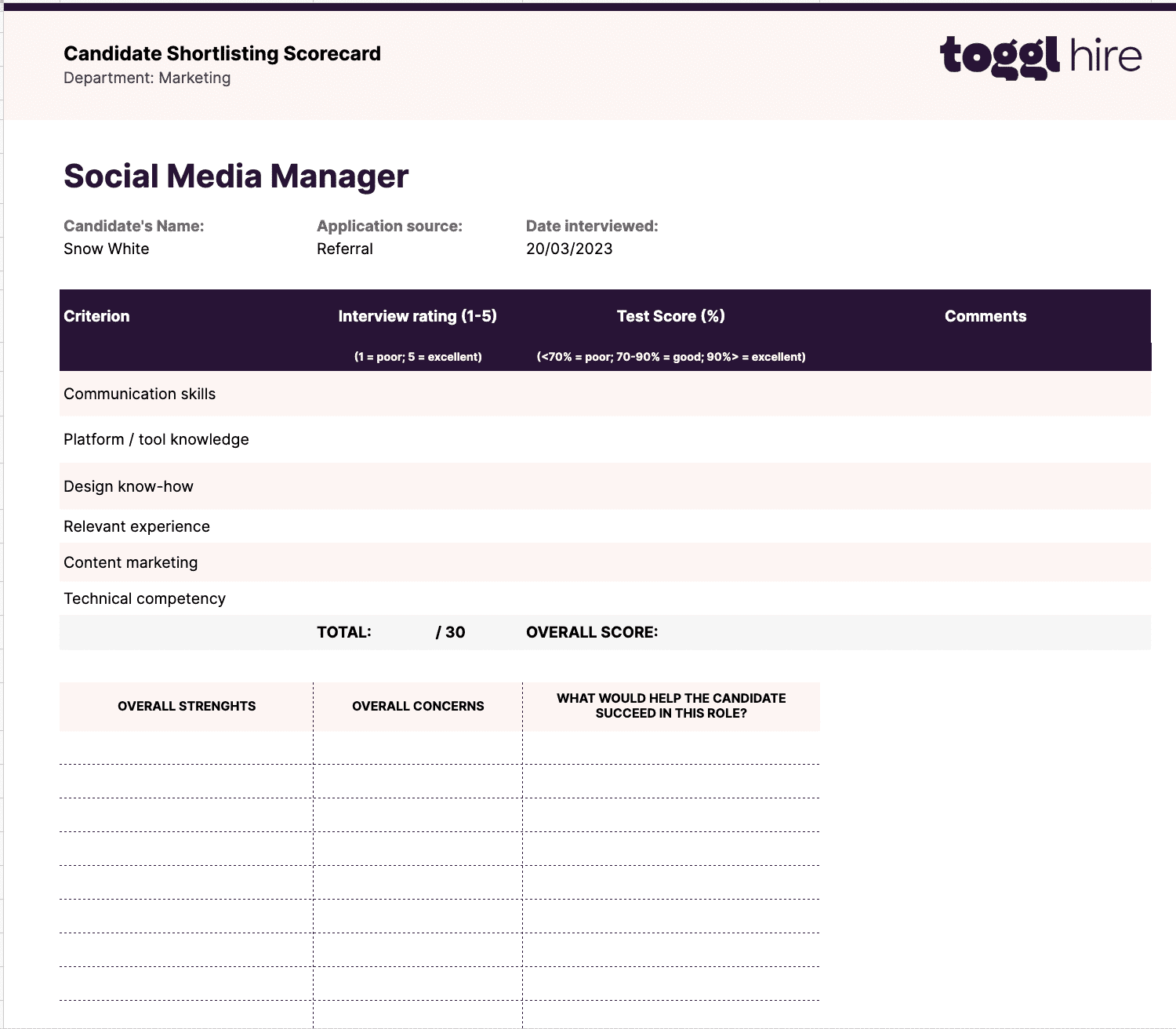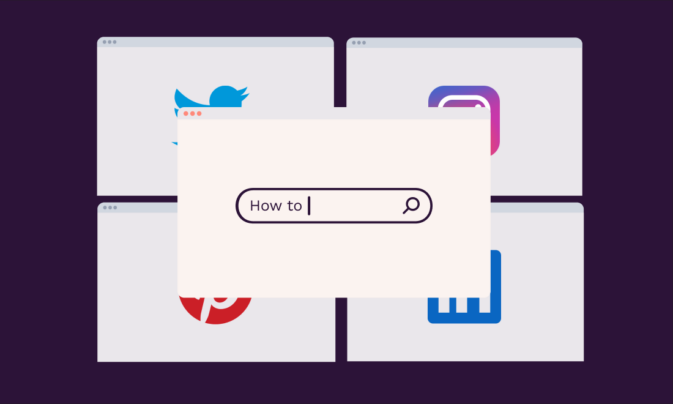Simplifying and speeding up the time to hire is something every hiring team loves. Talent teams can work smarter, standardizing and streamlining the interview process by using a candidate interview evaluation form. The evaluation form helps teams get on the same page about prospective candidates plus reduce bias.
To help your team make the right choices quickly, we’ll share best practices for designing interview evaluation forms that hook top quality, professional candidates.
TL;DR – Key Takeaways
- What is an interview evaluation form? It’s a standard form that interviewers use to evaluate a candidate against a particular set of criteria.
- What is an interview rubric? Interview rubrics are included in the evaluation form to enable everyone to assess a candidate fairly, based on a set scoring system.
- What are the benefits of these evaluation forms? Along with reducing personal bias, they can help to speed up interviews and enable teams to make more data-driven decisions about potential new hires.
- Lastly, we explore 7 tips to design an interview evaluation form that everyone on the team can use, such as agreeing on success criteria, following a structured interview approach, and leaving enough space for comments or notes on any red flags you might spot.
- To power up your recruitment process, ensure candidates perform skills assessments before or after interviews. With Toggl Hire’s skills tests, your organization can spot the real talent fast!
What is a candidate interview evaluation form?
A candidate interview evaluation form is an organizational document that lists a set of fixed criteria for assessing an applicant. These forms help members of the hiring team document their thoughts on each candidate’s performance in an interview.
Since everyone on the team answers the same set of questions and uses the same method to score applicants, it helps make the process more standardized, fair and can ultimately speed up the overall recruitment cycle.
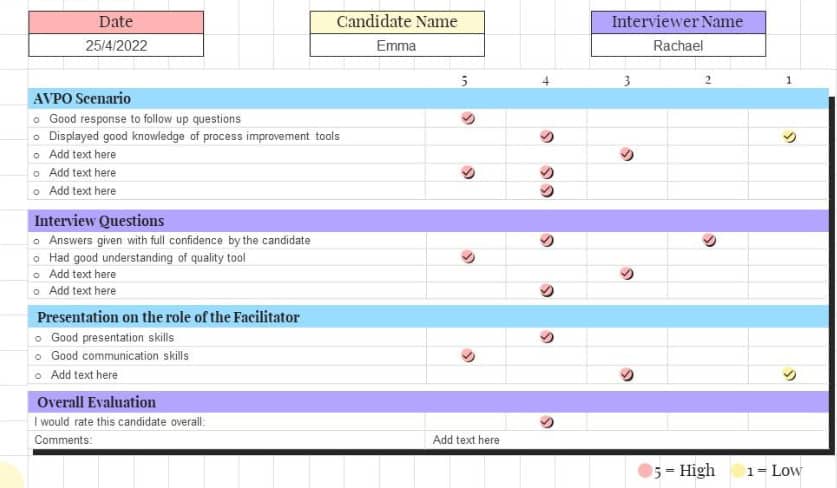
What is an interview rubric?
An interview rubric, also called a hiring or candidate scorecard, is a scoring tool that enables interviewers to rate specific categories, like education level and communication skills, for each candidate.
It is key component of an interview evaluation form and provides a quantitative way for the hiring team to decide who they want to progress to the next step in the hiring process. The interview rubric can help reduce bias as the team objectively measure, score, and analyze each candidate with the same rating system.
The team must understand the ratings system and agree on the rating standards, such as 5 – Exceptional, 3 – Average and 1 – Poor.
What is typically included in the interview evaluation form?
Every organization, and possibly each department, may create their own variation of the form. Typically, however, interview evaluation forms include components such as:
Basic details — the date, candidate name and interviewer name, the job title.
An interview rubric — for scoring candidates on each section.
Evaluation criteria or rating explanations — so there is no confusion about scoring.
Interview questions — on core areas, such as appropriate educational qualifications, work experience, interpersonal skills, and knowledge about your company.
Space for adding comments and recommendations — so nobody forgets their thoughts on each applicant.
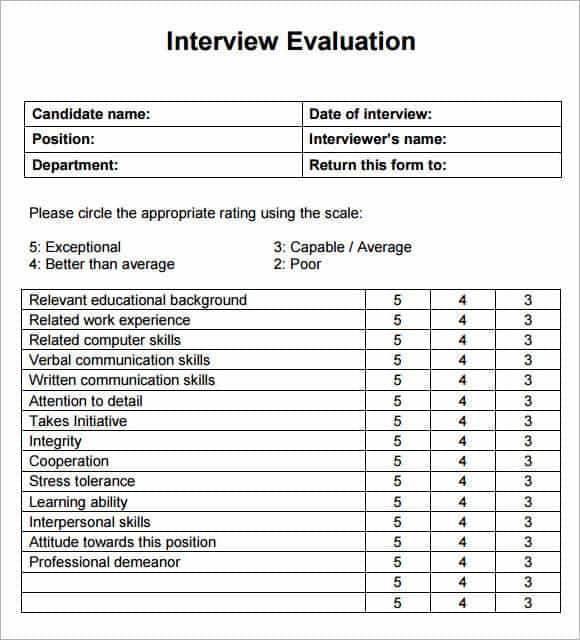
🔥 Don’t want to build your candidate scorecard from scratch? Download our FREE scorecard template for interviews and check out assessment template library for technical screening.
5 Benefits for creating simple interview evaluation forms
When companies don’t use an evaluation form during the interview process, the process could become more complex and lengthy, resulting in bias creeping in and selecting new hires that may not be a good fit in the long run.
Considering that it takes an average of 42 days to fill a role, anything that drags the process out further will cost the company more time and money.
Plus, to help modernize HR recruiting practices, the team need more quantitative data to make data-driven people decisions. Without a standardized interview evaluation form, the team may rely on gut feel to inform their decisions.
Ultimately, both the business and candidate benefit from this shift to more quantitative data, as it reduces the risk of bias and speeds up the hiring process, among other benefits (like these below).
1. Standardization
Standardization is important in recruitment.
By using standardized interview evaluation forms, it provides a level playing field for all candidates. They’re all assessed based on the same criteria, so it’s consistent no matter who is conducting the interview, and the same scoring method makes it more fair for candidates.
As a result, hiring teams can collate candidate data faster and remove any roadblocks that may slow down the recruitment cycle.
2. Reduce bias
Reducing personal bias in the interview process — like scoring someone with a higher score solely because they went to the same uni as you — can help ensure all candidates are treated equally.
The structured approach and exclusion of personal information, such as age and gender, ensures everyone follows the same procedures, and reviews candidates as objectively as possible.
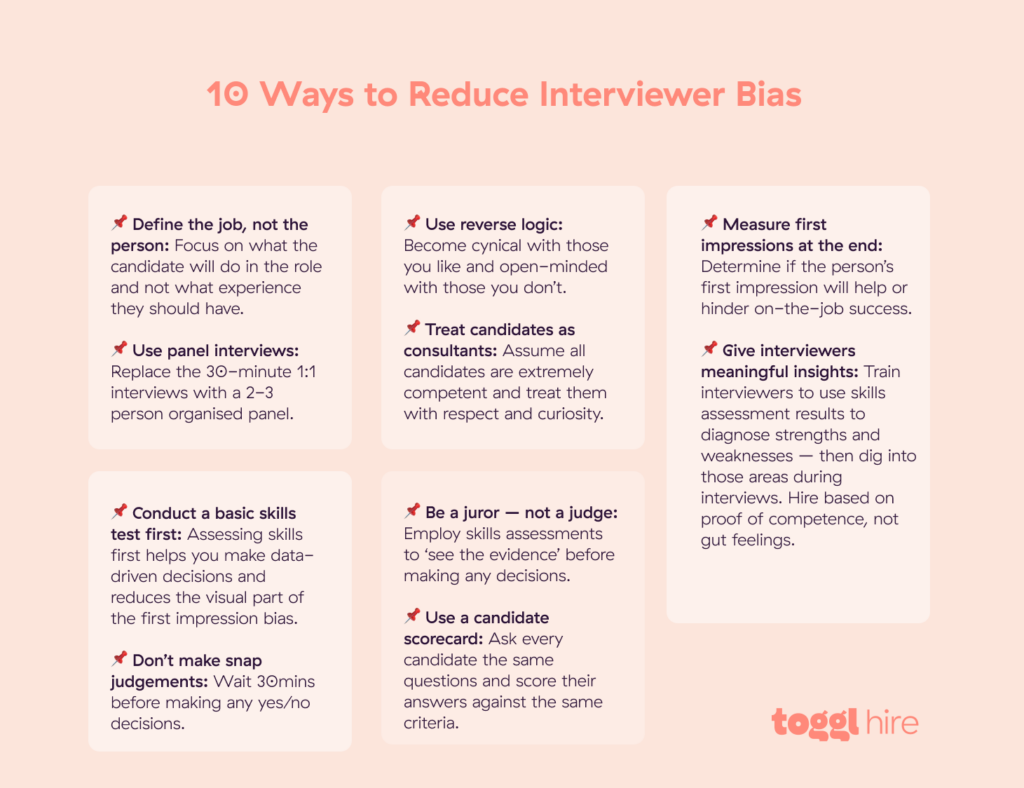
3. Talent records for easy reference
Hiring teams can quickly and easily review the core info about an applicant by revisiting their evaluation form. This is particularly useful if there are hundreds of applicants for a particular role, or the candidate is considered for a future role. What’s more, clear, quantitative records support the teams’ ability to make data-driven decisions.
4. Improve candidate feedback
Candidates always want to know how they’ve performed in an interview. And they don’t want to wait weeks or months to hear whether they were successful or not. Having all relevant info available immediately on the evaluation form makes it quicker and easier to provide feedback to candidates and deliver a good candidate experience.
5. Ensure compliance
Having records of each candidate interview can simplify any compliance or audit processes. Evaluation forms should provide the evidence needed for any HR compliance related issues, such as litigation concerning the fairness of an appointment.
Interview evaluation forms may be a helpful resource, but how do you create ones that everyone can use? Here are a few tips to guide your approach as you create evaluation forms for your organization.
7 Tips for designing an effective candidate interview evaluation form
Your company’s interview evaluation forms should be easy to use and help the hiring team make quick, analytical decisions on which candidates will go to the next step in the recruitment process. Consider these tips to help you kick-start the process.
1. Prep your interviewers
Before you start designing your evaluation form, you may need to prepare some of the interview team beforehand. First time interviewers, especially, may need some basic training on aspects like:
How to conduct interviews
What bias is and how to avoid it
Body language
What not to ask in interviews
2. Agree on success criteria
Before designing the interview evaluation form, the team needs to decide what success looks like. In other words, what criteria the ideal candidate for the position will need. For example, a good candidate for a project manager role needs a degree in business management, strong leadership skills, five years’ experience, and excellent problem-solving skills.
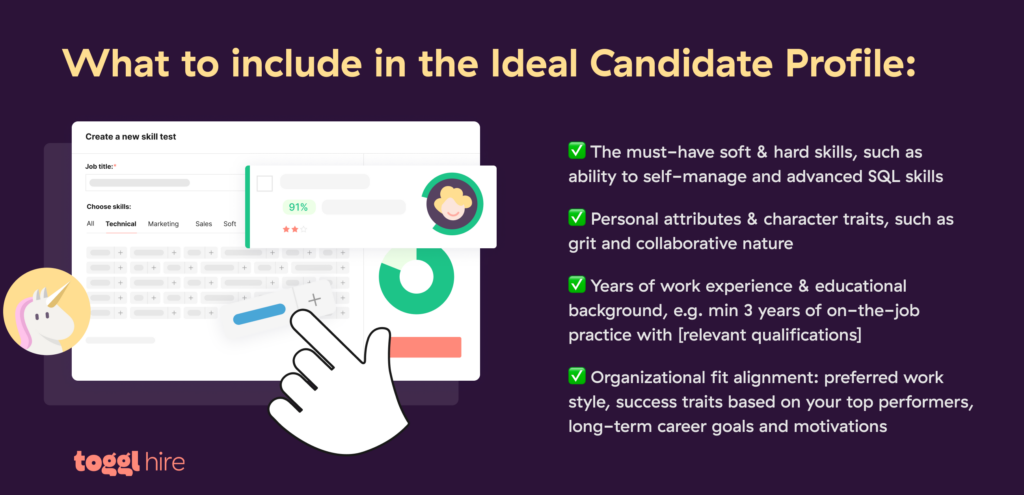
The team can decide which particular competencies, experience, skills and other requirements to include. And these will shape the questions that you include on the form.
3. Use an interview rubric
An interview rubric is a crucial part of the form. To get everyone on the same page with the scoring method, the team will need to:
- Quantify the key job skills by using a numerical rating system. For example, a candidate with all five selected skills scores a 5/5.
- Decide on the rating scale or what each score means so that scoring is consistent across the team. For example, 1 – poor and 3 – satisfactory.
- Double check before the interview that everyone understands the rating scale and debrief afterwards to ensure everyone followed it correctly.
It’s important that all interviewers use the rubric, so that all candidates are evaluated fairly — against a consistent set of expectations. Plus, it’s a good idea for all interviewers to input on what constitutes a quality answer to add what they’ve learned from their experience.
What’s more, rubrics can help reduce bias by supporting a more analytical approach to interviews. Considering that up to 65% of tech recruiters feel that there is bias in tech recruitment, hiring teams using an interview rubric can help mitigate this.
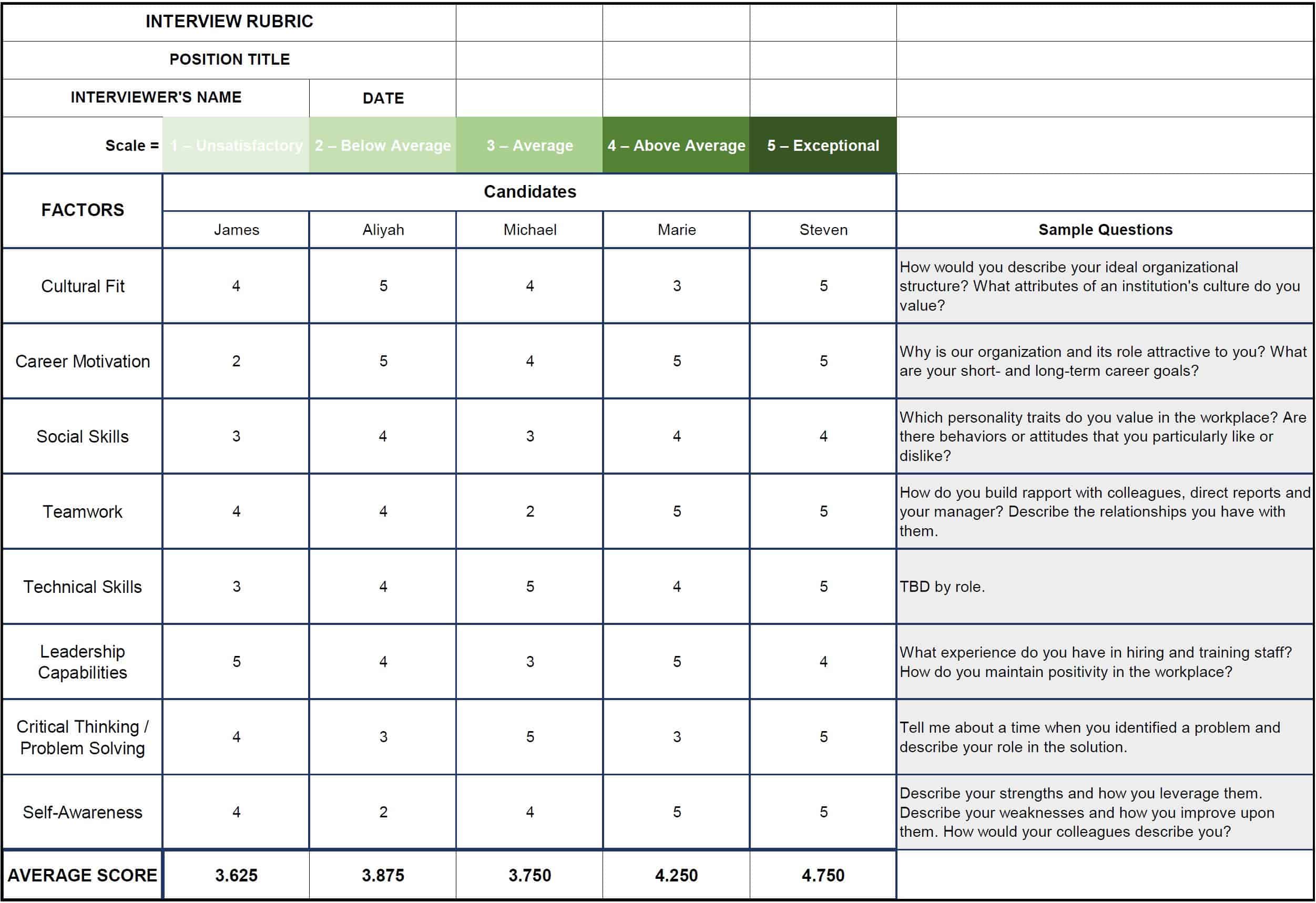
4. Follow a structured interview process
A structured interview format is another tool that facilitates fairness in the interview process. With structured interviews, the team uses a pre-defined set of interview questions for every candidate interviewed for a particular role.
What’s great is that this format can help speed up the interview process, as interviewers get less sidetracked (hopefully) with irrelevant details, like the candidate’s favorite type of pizza! If the team are interviewing a boatload of candidates for a role, saving time and staying on track is definitely a must.
Structured interview questions can include:
- Skill-specific questions, such as ‘What programming language do you prefer and why?’.
- Behavioral questions, such as ‘Describe a time you had to motivate a team or team member to manage a shorter deadline’.
- Company culture questions, such as ‘What did you like most about your last company?’. But be careful not to focus too much on ‘culture fit’ and instead look for positive signals of organizational fit.
By asking open-ended questions — ones that start with ‘Why, How, Explain, Describe’ — you’ll get more info from the applicant than basic yes/no type questions.
Unsure about the difference between structured and unstructured interviews? Find the answers here:
5. Leave space for notes and comments
During an interview, you may hear the candidate say something that piques your interest, for the right or wrong reasons, that you want to discuss with the team afterward.
For example, you notice immediately that the candidate is very braggy about their achievements. And you jot this down as an interview red flag to unpack later.
That’s why it’s a good idea to allow plenty of space on the form for comments, notes, and your overall impression — since remembering something you noticed six candidates ago is not easy for everyone… (except that braggy guy, of course!).
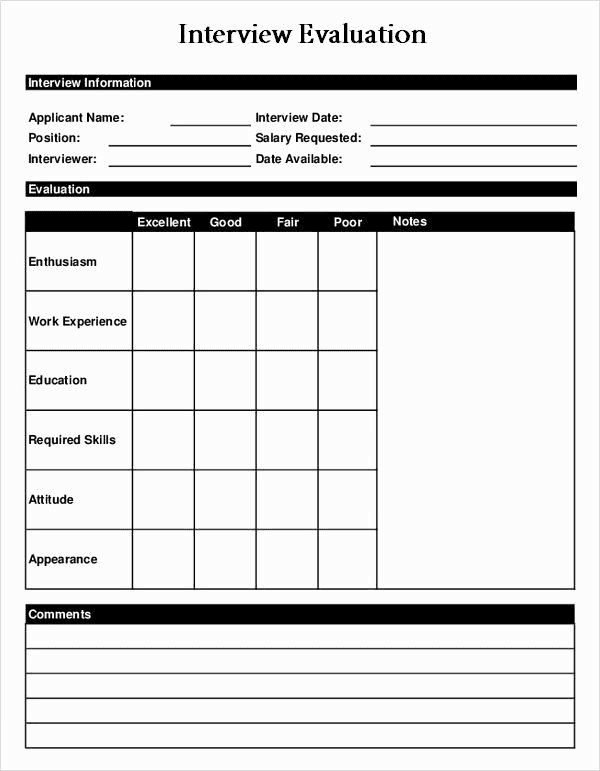
6. Regularly review your forms
At some point, you and your team may notice that your interview evaluation form needs a few changes, such as adding a section on coping with remote work. Keeping your forms up to date could help minimize any interviewer frustration as the content is up-to-date and ready for them.
In addition, you may need to adjust the form depending on the position. If it’s a junior position, a simple evaluation form will suffice, but for a managerial or leadership position, the form may need more detail, such as delving into the person’s specific experience and abilities.
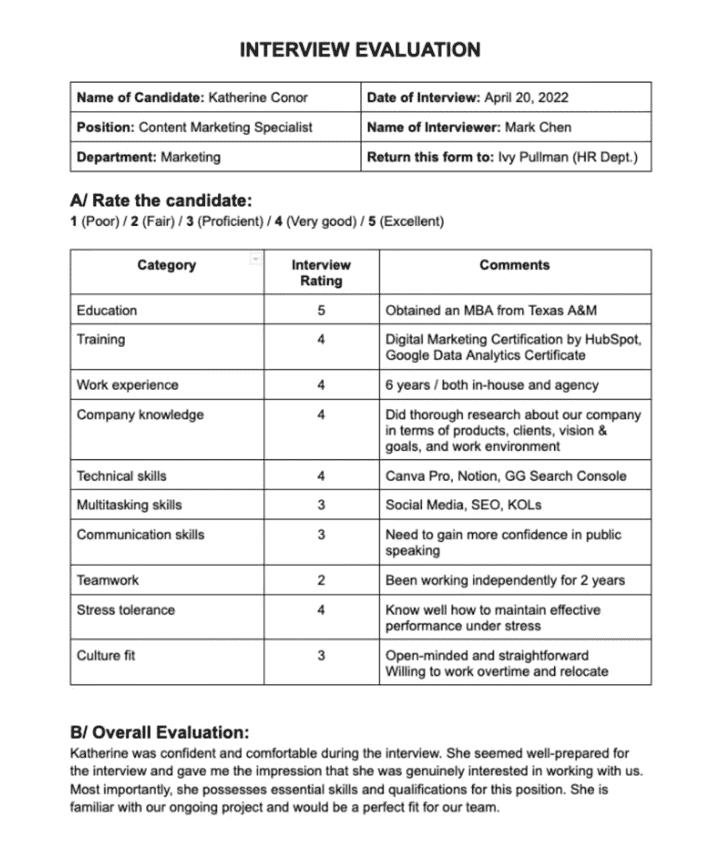
7. Debrief immediately
Our final tip is for interview teams to debrief immediately (or as soon as possible) after interviewing each candidate. Even if it’s only for five minutes. That way, you can compare scores, check everyone’s still on track using the rubric correctly and recalibrate as needed, or correct any team behavior that detracted from the interview.
How to supplement your interviews with skills assessments
Creating an interview evaluation form that is relevant and easy to use will help the hiring manager ensure consistency and a more fair approach when evaluating candidates.
Another key aspect of the recruiting cycle is skills assessments. Skills tests focus on applicants’ actual skills and capabilities, filtering out those with high potential. With 49% of today’s employees working in jobs unrelated to their formal education, there’s a lot of scope for a skills-first approach in hiring.
Skills assessments fit in well in two different spots in the recruiting cycle:
You can assess candidates’ skills before the interview. And use the test score to identify the candidate’s strengths and weaknesses, which the panel can discuss with the applicant during the interview.
Or, you can assess candidates’ skills after the initial interviews. That’ll be once the high-level technical and cultural fit has already been confirmed.
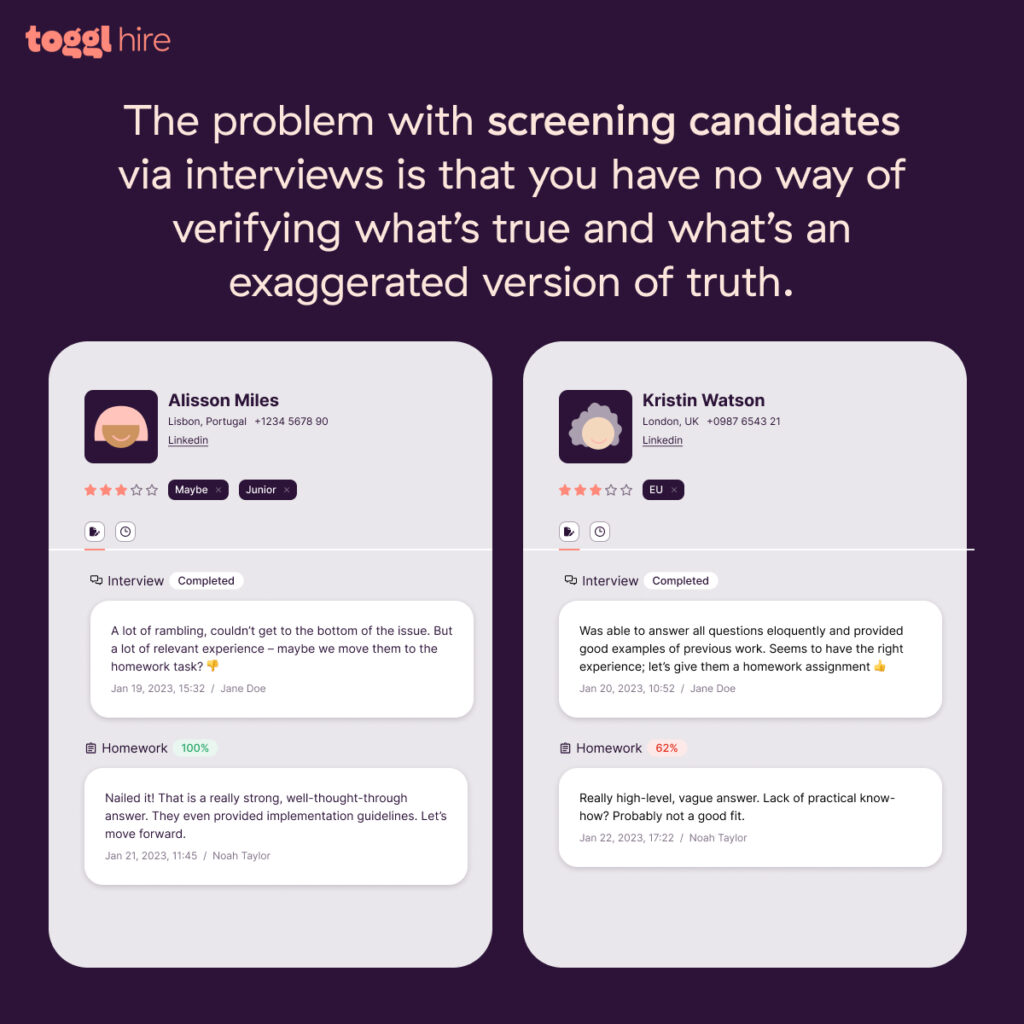
The great news… Toggl Hire can support both of these skills-first approaches with our easy-to-use skills platform! Plus, help your organization stamp out bias and deliver a candidate experience that hooks a diverse range of mega talent. Browse our assessment library to find what you need!
Juste loves investigating through writing. A copywriter by trade, she spent the last ten years in startups, telling stories and building marketing teams. She works at Toggl Hire and writes about how businesses can recruit really great people.
